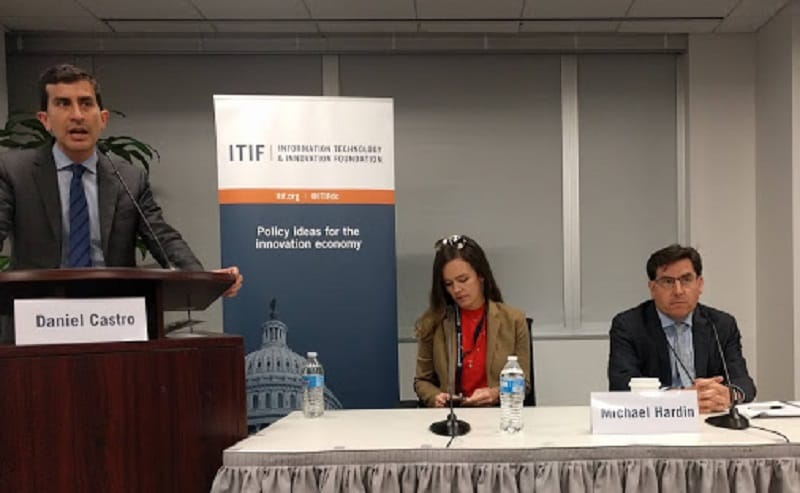Law Enforcement and Advocates of Facial Recognition Technologies Battle Misconceptions
WASHINGTON, July 24, 2019 – Experts in law enforcement and privacy came together at the Information Technology and Innovation Foundation on Wednesday to debunk common assumptions of how officials use facial recognition. For law enforcement to properly meet the needs of the community, they we must ma

WASHINGTON, July 24, 2019 – Experts in law enforcement and privacy came together at the Information Technology and Innovation Foundation on Wednesday to debunk common assumptions of how officials use facial recognition.
For law enforcement to properly meet the needs of the community, they we must make sure that they have the most up-to-date tools at their disposal, said ITIF Vice President Daniel Castro.
The optics on today’s cameras and phones are so advanced, said Eddie Reyes, director of the Office of Public Safety Communications for Prince William County, Virginia. And yet law enforcement is hindered by outside groups critical of this technology.
It’s “clear” that machines are better than humans at matching a photo to a person, said Michael Hardin, director of policy at U.S. Customs and Border Protection. The availability of facial recognition permits the people to conduct other, more meaningful activities.
Moreover, said Reyes, any image recognition requires some form of human intervention to ensure that investigations run smoothly. Regarding policies that address facial recognition software, policymakers need to evaluate five key components. Image capture, image usage, retention period of records, the accuracy of the image and human oversight.
Recently three cities have banned government and law enforcement usage of facial recognition technology: San Francisco, Oakland, and Somerville, Massachusetts. These bans, said Maureen McGough, national programs director of the National Police Foundation, may stem from a “fundamental misunderstanding” of how that technology is used.
When facial recognition is outlawed, said Benji Hutchinson, vice president of federal operations at NEC Corporation of America, it becomes portrayed as solely a video-surveillance technology. This ignores its potential benefits.
We try to demonstrate facial recognition’s facilitated benefits, said Hardin, in addition to the security benefits. For example, facial recognition allows people to “use their face as a passport” when passing through customs, thereby expediting the process and making it more efficient.
In these types of cases, said McGough, people can agree that this is a useful technology. The main concern, however, is the threat of abusing facial recognition for routine data collection, said Reyes.
When discussing the implications of facial recognition, said Hutchinson, there is a lot of hyperbole over what can go wrong, rather than looking back at what has gone wrong.
Nevertheless, said McGough, community involvement and transparency are important in order to eliminate the fear of this technology. If successfully applied, facial recognition can facilitate cooperation across multiple jurisdictions, allowing them to work more efficiently.









Member discussion